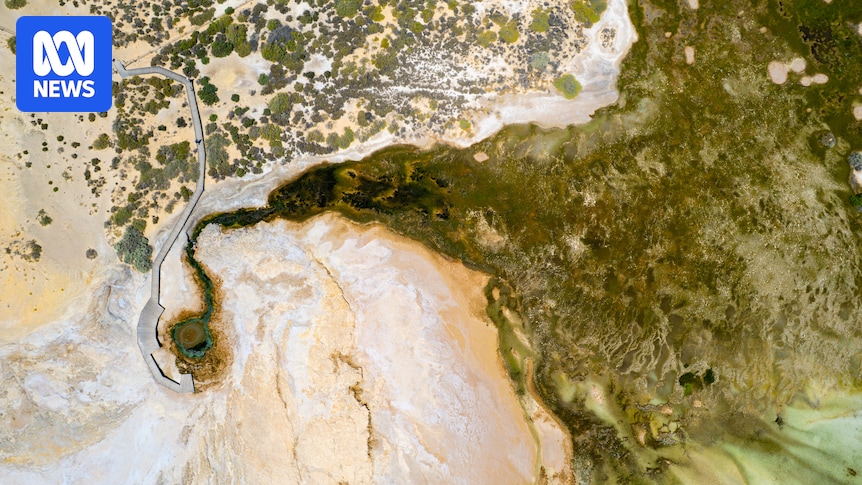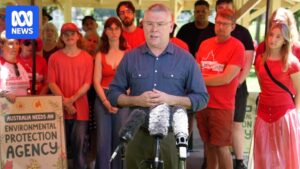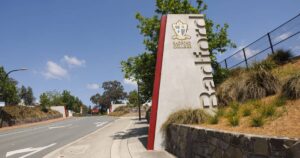
The Great Artesian Basin, covering a fifth of Australia, holds water that has been there for millions of years. However, decades of extraction are taking their toll, and the traditional Arabana owners are now fighting mining giant BHP for compensation over the impact on their cultural heritage and environment.
To outsiders, the Australian outback may seem harsh and unforgiving, yet it holds secrets to survival in what appears to be a desolate landscape. Outback South Australia is where Arabana elders Joe Hull and Betty Larkins were born. While life led them closer to townships like Port Augusta, their connection to Country remains unbroken.
“When you get here, you know, you shed a little tear about who lived here and what we did,” Joe reflects. “No matter how far you go, you’ll always come back to Country, because it’s like a magnet, you know, it draws you back.”
The Changing Landscape
Over the decades, Joe and Betty have witnessed significant changes in the landscape. “The mound springs — the water that’s attached to it — is life,” Joe says. “Spiritual things that are attached to water. It’s gone, and we cry about that. Water means everything.”
The springs, not far from the southern shores of Kati Thanda-Lake Eyre, rely on freshwater flowing underground rather than floodwaters. These mound springs, surrounded by centuries of sediment, each have unique flora and fauna. Yet, many have dried up, and the health of others has deteriorated.
Impact of Extraction
The springs on Arabana Country are fed from the Great Artesian Basin — one of the world’s largest underground freshwater reserves, spanning almost 1.7 million square kilometers. Experts believe some of the water has been there for two million years. Its natural pressure allows water to surface through springs or bores.
According to the federal government, business activities in the basin, including agriculture and mining, contributed $33.2 billion to the economy last year. Hydrogeologist Matthew Currell from Griffith University explains that many bores were drilled and left to flow freely in the early 20th century, supporting economic activity but reducing water pressure significantly.
“It meant that the pressure of the water in the [Great Artesian Basin] reduced quite substantially and quite rapidly, and that meant that a lot of these incredible springs actually stopped flowing completely,” Currell notes.
Efforts to cap bores have shown improvements, balancing extraction and replenishment. However, the Arabana people report no such recovery in South Australia.
BHP’s Role and the Arabana’s Struggle
Close to the Arabana springs is BHP’s Wellfield A, pumping over four million liters of water daily to its Olympic Dam mine, with an additional 29 million liters from Wellfield B. Betty and Joe lament the changes, recalling a time when springs like The Bubbler had much stronger flows.
Scientific monitoring supports the Arabana’s observations. Currell explains that local extraction can significantly impact spring flow rates, with some springs ceasing to flow entirely due to BHP’s extraction activities.
In 2019, BHP committed to forming an agreement with the Arabana for compensation, but negotiations have stalled. BHP acknowledges the cultural significance of the Great Artesian Basin and Mound Springs to the Arabana people, yet frustrations persist.
“I just want BHP to come and front us. Come sit around the table and talk to us and tell us what is going on, and we can explain to them how we feel,” Betty urges.
Future Implications and Hopes
BHP claims recent data shows increasing pressure around the springs and plans to reduce reliance on Wellfield A by the mid-2030s, with a government-built desalination plant in the works. The company emphasizes its commitment to engaging with Traditional Owners and stakeholders on water use and planning.
Zaaheer McKenzie, an Arabana ranger, stresses the cultural significance of the springs and the need for BHP to take negotiations seriously. “If you take some of those springs away or destroy them, that breaks that connection between Ularakas, our stories,” he says.
The federal government’s 2024 assessment of the basin’s health found improvements but also ongoing threats from inadequate infrastructure maintenance and climate change.
For the Arabana, returning to Country is vital. They hope for an agreement with BHP to restore the springs and improve infrastructure, allowing community members to reconnect with their heritage. “Coming home to Country, it lifts your spirit,” Joe concludes, emphasizing the importance of preserving their legacy for future generations.






